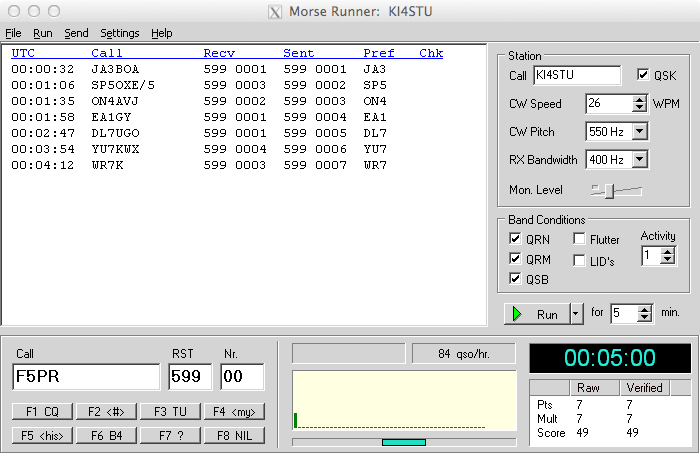- OnWorks Pear OS online, a MAC OS emulator with an online ease-of-use distribution that has a custom user interface with a Mac OS X-style dockbar, and out-of-the-box support for many popular multimedia codecs.
- Venture Special Edition. Apple CarPlay ® Compatible. The ultimate copilot. Use your compatible iPhone ® with your Toyota's audio multimedia system so you can get directions, make calls, send and receive messages, and listen to music, while staying focused on your commute. Available on select Toyotas.
- Wine (originally an acronym for 'Wine Is Not an Emulator') is a compatibility layer capable of running Windows applications on several POSIX-compliant operating systems, such as Linux, macOS, & BSD.

Run utility software like Quicken and Microsoft Office, or DirectX games, like Wizard101. And bonus: Games from your Steam library will run with CrossOver Chrome OS at native speeds. Buy Now – $39.95 — $59.95 Free Trial How to Install. Running on Clouds. The secret to On’s success lies in the unique technologies it builds into its shoes. First, there’s CloudTec, which is the company’s patented cushioning construction.
QEMU is an open-source emulator for virtualizing computers. Unlike VMWare, it's able to both virtualize CPUs and emulate various CPU instruction sets. It's pretty powerful, free, and has a macOS port. There are alternate versions and different ways to install it. Still, in this example, I'm using Homebrew, a package manager for macOS/OSX that allows you to install software via the CLI and manage easily.
Now, this post wouldn't be very exciting if I tried this on my Mac Pro, but I decided to try it on my MacBook M1. Thus far, the community has succeeded in getting QEMU to install the ARM version Windows, so I decided to do the more silly path and get PPC and X86 working on Apple Silicon. I encountered very little resistance, which surprised me as I haven't seen/read anyone trying this route. It's surprsingly very usable but the usefulness is going to be limited. I was able to play Sim City 2000 on Mac OS 9.2 at a fairly high resolution. For the sake of brevity, I'm going to skip over installing Homebrew on an Apple M1, but you'll want to use the arch -x86_64 method, which requires prepending. I've gotten OS 10.0 and nearly gotten Windows 10 working on my M1.
Http //www.adobe.com/go/reader. Included below is the instruction for both Apple Silicon and Intel Macs.
Requirements
- Basic understanding of the terminal in OS X/macOS
- Apple Silicon (M1) computer (or Intel) Mac
- Xcode
- xcode-select (CLI Tools)
xcode-select --install - Homebrew
Step 1: Install QEMU

This is the only step where Apple Silicon and Intel Macs differ. You'll need to install the x86 version of QEMU for the Apple silicon macs first.
Apple Silicon
x86 Intel Macs
Step 2: Create a disk image
The rest of the steps do not need any specification for M1 vs. Intel.
You can specify a route, but I just used the default pathing, the 2G = 2 GB below. You can get away with much less for OS X OS 9. If you'd like more space, change the size of the simulated HDD. .
Step 3: Launching the emulated computer and the tricky part: Formatting the HDD
Now that we have a blank hard disk image, we're ready to go.
Let's break this down so it's not just magic. The first command is the qemu core emulator, you can use things like 64-bit x86 CPU qemu-system-x86_64 or a 32-bit CPU qemu-system-i386 , but we're using a PPC, so we are using qemu-system-ppc.
Next, we're declaring PC bios with -L pc-bios, I'm unsure if this is necessary. This seems to be the default even in Mac QEMU. After that, the -boot flag declares the boot drive. For those who remember the days of yore, C is the default drive for PCs, D is the default for the CD-Rom like a PC. It's weird, I know. -M is the model flag. It's pretty esoteric, but QEMU uses OpenBIOS, and mac99 is the model for Beige G3s. The lowercase -m is memory, expressed in megabytes, but you can use 1G or 2G for 1 or 2 gigabytes like the format utility. -hda Purespa natural aromatherapy oil diffuser user manual. is the image we're using. Finally, -cdrom is the installer image
Step 3.5: Special considerations between operating systems
I discovered that OS X 10.0's installer has a significant flaw: It doesn't have a disk utility. The disk images are black disks thus have no file system. If you want to run OS X 10.0, you'll need to first launch an installer that can format HFS like OS 9 or later versions of OS X, run the disk utility, format the image and then exit out of the emulator. The process would look like this:
Then format the drive from the utility, quit the emulator (control-c on the terminal window).
Tiger and Leopard requires USB emulation so you'll need to add -device flags for a usb keyboard and a usb mouse, also both like a few extra -prom-env flags.
Power PC Leopard I can get to boot but it crashed twice during installs, this could be
Step 4: after the installer fininshes
You will end up seeing a failed boot screen after the installer finishes. This is normal. Either quit the QEMU instance or use control-c in the terminal to close it. Now that it's installed, we want to boot off the internal drive.
Runner Oxygen Level
MacOS 9 seems to do slightly better when adding the via=pmu and specifying the graphics.
Step 5: mounting disk images
There's not a lot to do with an OS without software. You can mount plenty of disk image formats
Bonus round: Trying for x86 64 Windows 10
Step 6: Multi CD-Rom Installs or swapping Disk Images
Older applications and OS installers require mutliple disk images. This can be done from via the CLI inside QEMU.

On the QEMU window press:
Running Os X In Vmware
- Control-Alt-2 to bring up the console
change ide1-cd0 /path/to/image- Control-Alt-1 to bring back the GUI
Thus far my Windows 10 experiment has been a lot less successful, I've gotten through the installer (it's unbearably slow) but it seems to hand on booting. It looks very feasible. I might have better luck using the 32 bit verison of windows.
Running Osx Vm
</section>